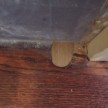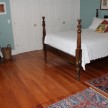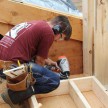Gaps in Wood Floors
Hardwood Floor Gaps
Winter is the time that I get questions about gaps in wood floors showing up in solid 3/4-inch thick, wood floors. Gaps in wood floors are normal, and occur when the wood loses its moisture content. Several factors can lead to its cause.
Humidity Wreaks Havoc on Hardwood Floors
Often “gapping” is a result of flooring that was installed during periods of higher humidity. Months later, usually during the heating season, gaps start to show up. The good news is that they usually close back up. Most times, a seasonal gap, one that that allow a dime to fit into it, will close back up during seasons of higher humidity.
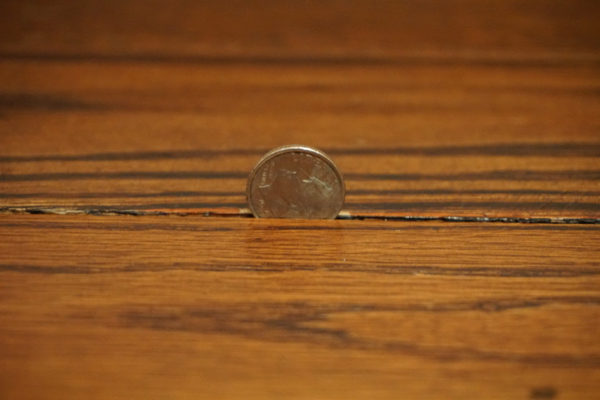 Indoor humidity imbalance can also cause gaps. The ideal humidity level is 30% to 50% and an ideal temperature is 60 to 80 degrees. All the wood in your home will expand or contract as moisture in the air changes. You may also notice that your doors or wood windows will swell and stick during rainy seasons.
Indoor humidity imbalance can also cause gaps. The ideal humidity level is 30% to 50% and an ideal temperature is 60 to 80 degrees. All the wood in your home will expand or contract as moisture in the air changes. You may also notice that your doors or wood windows will swell and stick during rainy seasons.
Reducing Humidity
Methods to reduce gaps include the use of room or furnace humidifiers. These products work by evaporation of water that is introduced into the environment through the heating system. With more moisture in the air, cells in hardwoods begin to expand.
Large Gaps in Wood Floors
Large gaps in wood floors that do not close up in summer months could be and a result of several factors, such as:
- Excessive moisture
- High home humidity
- Moisture from a crawl space below
- Flooring located too close to a heating vent
- Incorrect nail spacing
- Sub-floor levels or deficiencies
- Structural house settling issues
For normal gaps, no repairs are needed. Adding filler is not usually a good idea, as it will get pushed out as the wood expands with moisture. Filler will work effectively unless the humidity level is kept constant.
For larger, non-closing gaps, a professional contractor can properly repair floors, please consult a professional to evaluate this for you. The BEST time to repair or deal with wood floors is April or October.
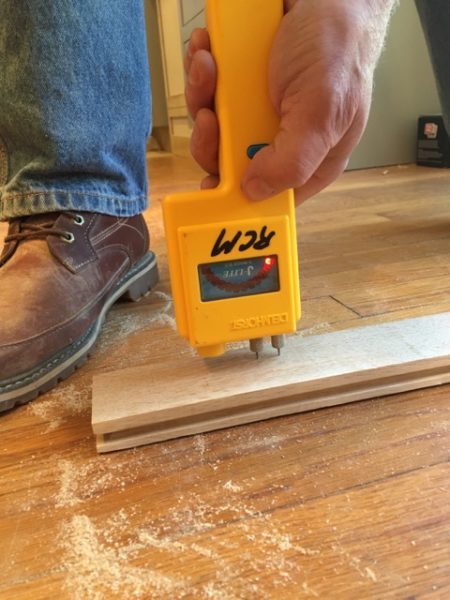
Moisture Testing
Achieving Average Humidity
When installing a new solid floor, its best to determine the average humidity level in the home year round. Your goal would be to achieve this average, allow the wood to acclimate in the home a week or two and then install. The acclimation and installation during average humidity will greatly help to reduce contraction and minimizing gaps. A hygrometer is the best tool to determine your specific job-site conditions.
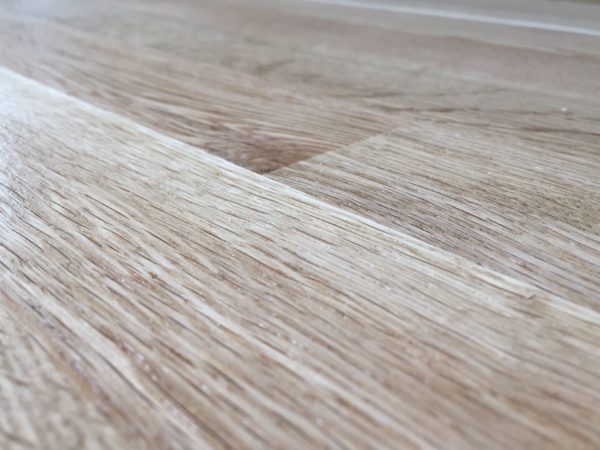
Rift and Quartered Oak
Choosing Stable Flooring: Rift and Quartered Sawn Oak
Choose a flooring material that is dimensional stable is a good start to ensure a tight, gap free floor. I often purchase and use rift and quartered oak which is touted as approximately 30 percent more stable than plain sawn oak flooring. Solid wider width boards will show more gaps, while narrow strip floors can show less.
Rift and quartered boards rival engineered flooring. These boards will only expand / shrink in thickness (height) and will remain stable from side-to-side (width). They are perhaps the best option for wood floors and electric radiant heat, and also an excellent choice to minimize seasonal gaps, buckling, and so on.

Oak Install
Gap Reducing Tips for Wood Flooring
- Narrow boards will better accommodate wood’s natural expansion and contraction across a floor.
- Use quarter-sawn wood for planks wider than 3 inches, for better dimensional stability.
- Acclimate your wood floor: Wood naturally expands and contracts to reach balance with the relative humidity of its surroundings.
- Avoid installing wood flooring when moisture levels are high, such as during painting or the installation of plaster.
- Before hardwood floor installation, operate the heating system until the relative temperature and humidity in the space. Achieve the average level expected for seasonal conditions in the area in which the wood floor will be installed.
- Ensure the floors moisture content is appropriate for your area. 6-to-8 percent moisture content is average.
- Reclaimed woods typically have tighter growth rings making them denser and more stable and less likely to shop gaps.
- Parquet flooring expands and contracts less.
- Dark floors hide gaps between boards.
- Flooring with beveled edges make any gaps less obvious.
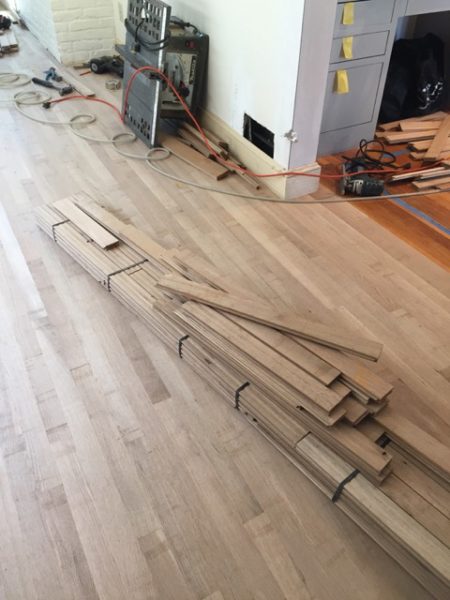
Rift and Quartered Oak
Problem Areas
There are situations with floor gaps in solid hardwood is a recurring problem. whether a result of the environment, structural issues or humidity issues. It’s in these situation that I recommend you look at engineered flooring as an option. It is rare that engineered floors have seasonal movement issues..





